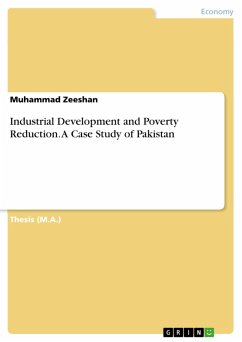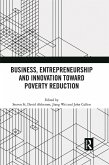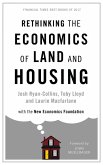Thesis (M.A.) from the year 2013 in the subject Business economics - Economic Policy, grade: 3.25/4.00, University of the Punjab (UNIVERSITY OF THE PUNJAB LAHORE PAKISTAN - DEPARTMENT OF ECONOMICS), course: DEVELOPMENT ECONOMICS, language: English, abstract: This purpose of this research is to explore the relationship between industrial development and poverty reduction in case of Pakistan. The data is taken from 1975 to 2010. It takes the hypothesis that industrial development will decrease poverty through increased employment and rise in the per capita income. All the variables used in the model are stationary at 1st difference. I have employed ARDL approach to Co-integration to find relationship between industrial development and poverty reduction. The approach and findings of the study are compared with that of regional and East Asian countries, which have developed through industrialization. The t-values for LINDG is highest among the independent variables, which means growth in industry can reduce the poverty to greater extent. The population growth of Pakistan is quite high, by increasing the literacy rate; we can make the labor skilled, increasing human capital, that will lead to more jobs and earning opportunities, reducing poverty.
Dieser Download kann aus rechtlichen Gründen nur mit Rechnungsadresse in A, B, BG, CY, CZ, D, DK, EW, E, FIN, F, GR, HR, H, IRL, I, LT, L, LR, M, NL, PL, P, R, S, SLO, SK ausgeliefert werden.









